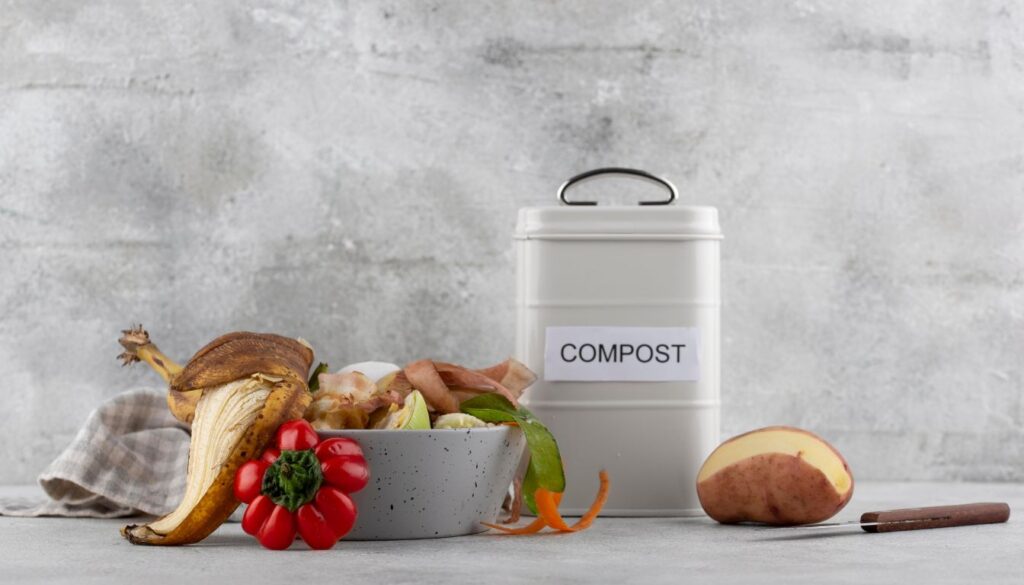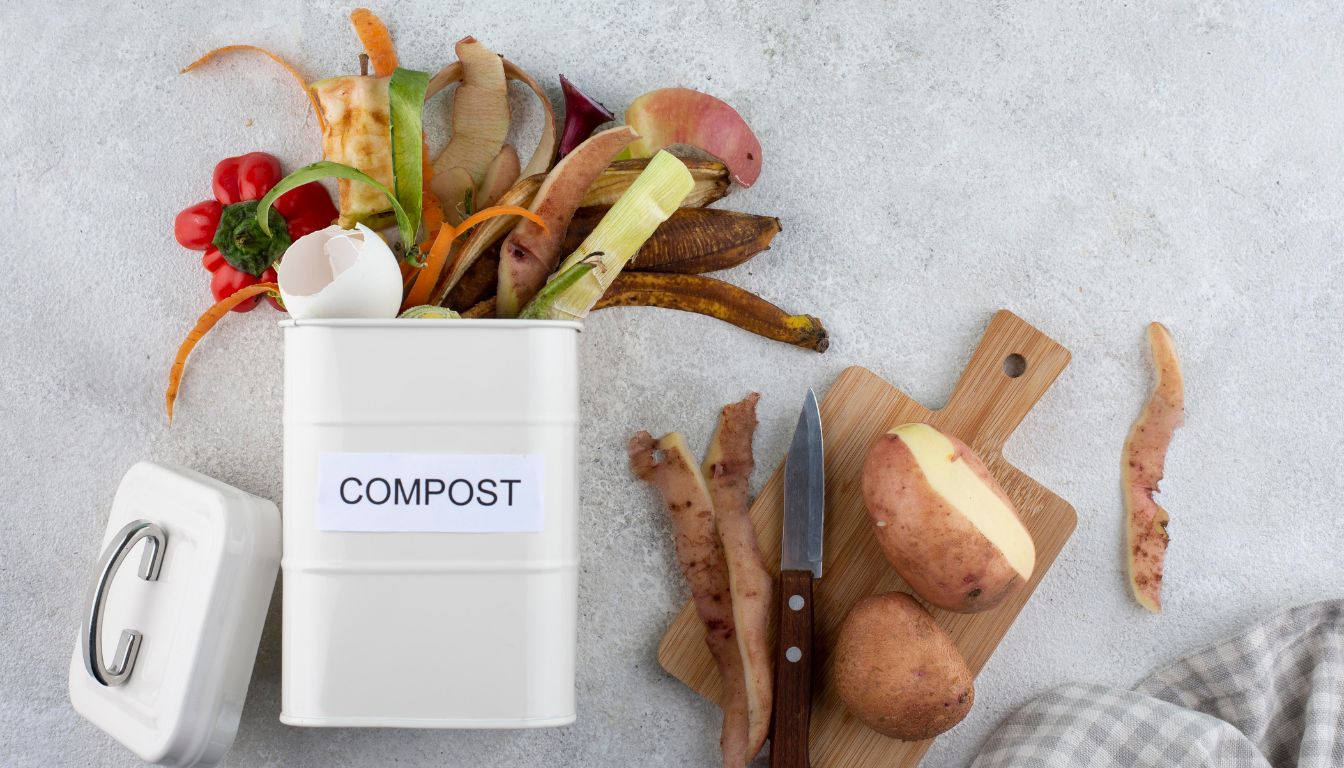Getting the compost ratio right can make all the difference in creating nutrient-rich soil for your garden. As someone who’s dived deep into the world of composting, I know how overwhelming it can be to figure out the perfect blend of materials. Too much of one thing can lead to a smelly mess, while too little can leave your compost pile stagnant.
The secret lies in understanding the balance between greens and browns. Greens are your nitrogen-rich materials like kitchen scraps and grass clippings, while browns include carbon sources like dried leaves and cardboard. By mastering this ratio, you’ll not only speed up the composting process but also ensure your plants thrive. Let’s explore how to achieve that perfect mix and turn your waste into a gardener’s gold.
Understanding Compost Ratio
Compost ratio refers to the balance between nitrogen-rich greens and carbon-rich browns in your compost pile. Getting this balance right transforms everyday waste into nutrient-dense soil.
Definition of Compost Ratio – Perfect Compost Ratio for Nutrient-Rich Garden Soil
The compost ratio typically involves a 30:1 ratio of carbon to nitrogen. This means for every part of nitrogen, I add about 30 parts of carbon. Greens include kitchen scraps, grass clippings, and fresh plant material. Browns consist of dried leaves, cardboard, and straw. Understanding this definition helps me create a thriving compost environment.
Importance of Compost Ratio
Balancing the compost ratio is vital for effective decomposition. A proper mix accelerates the breakdown of materials, saving me time. If the ratio skews too far toward nitrogen, the compost can become smelly and soggy. Too much carbon leads to a slow decomposition process, leaving my compost pile looking like a pile of twigs. Keeping the ratio in check promotes healthy microbes and creates rich compost that plants love. Plus, a well-balanced compost pile reduces waste and benefits the environment.
Factors Affecting Compost Ratio

The compost ratio depends on several key factors that impact its efficiency and effectiveness. Understanding these factors ensures a successful composting process.
Carbon-to-Nitrogen Ratio – Perfect Compost Ratio for Nutrient-Rich Garden Soil
The carbon-to-nitrogen ratio is crucial for composting. It’s typically recommended at 30:1, meaning 30 parts of carbon for every part of nitrogen. Carbon-rich materials include dried leaves, straw, and wood chips. Nitrogen-rich items include kitchen scraps, lawn clippings, and manure. Too much nitrogen leads to odors and a soggy mess. On the other hand, excess carbon slows down decomposition. Managing this ratio keeps composting efficient and odor-free.
Moisture Content
Moisture content also affects compost quality. Compost needs a balance: around 40% to 60% water content is ideal. Too much moisture makes the compost anaerobic, promoting bad smells. Insufficient moisture can dry out the materials, halting decomposition. I often spray my compost with water or cover it during rain to keep moisture levels just right. Finding this sweet spot helps microbes thrive and creates wonderful compost for gardening.
How to Calculate Compost Ratio
Calculating the compost ratio helps ensure a balanced mix of materials, which encourages effective decomposition. I aim for a simple approach: keep that 30:1 carbon-to-nitrogen ratio in mind while mixing my compost materials. It makes the process straightforward and guarantees nutrient-rich soil.
Ideal Ratios for Different Materials – Perfect Compost Ratio for Nutrient-Rich Garden Soil
Let’s break down some ideal ratios for common compost ingredients:
- Kitchen scraps: These nitrogen-rich items, like vegetable peels and coffee grounds, should make up about 25% of my compost pile.
- Grass clippings: Similar to kitchen scraps, grass clippings are also nitrogen-heavy, so I limit them to 20% of the mix.
- Dried leaves: As carbon-rich contributors, dried leaves can take up about 40% of my compost.
- Cardboard: This carbon powerhouse should comprise around 10% of my compost and adds structure, helping aerate the pile.
- Other materials: Items like straw or shredded paper can fill the remaining 5%. These help break down clumps and enhance airflow.
Balancing these ratios keeps my compost thriving and my plants happy.
Tools for Measuring Compost Ratio
Measuring compost ratios becomes easier with a few handy tools. Here’s what I like to use:
- Measuring cups: I grab these for measuring kitchen scraps and smaller items. They provide consistency.
- Kitchen scale: Weighing ingredients takes the guesswork out of ratios. I weigh my nitrogen materials and carbon materials to maintain that perfect balance.
- Compost calculator apps: I find these useful for quick assessments on the go. They help me adjust my mix based on what I have available.
- Sifting equipment: A screen for older compost helps me determine how well the existing mix is working. I can see the decomposition level, which is a pretty good indicator of my composting skills.
Using these tools keeps my compost calculations accurate, ensuring each mix and each pile leads to great results.
Benefits of Maintaining Proper Compost Ratio

Maintaining the right compost ratio provides major advantages. Understanding this balance makes a difference in how well compost performs.
Enhanced Nutrient Availability – Perfect Compost Ratio for Nutrient-Rich Garden Soil
I notice that a proper compost ratio boosts nutrient levels in soil. Balanced carbon and nitrogen create a rich environment for plants. This nutrient-rich soil supports plant growth and improves yield. Consider using kitchen scraps, which offer nitrogen, alongside carbon sources like dried leaves. My garden thrives when these elements work together.
Improved Aeration and Decomposition
I find that the right compost ratio encourages better airflow. When materials mix correctly, they create gaps, allowing oxygen to reach beneficial microbes. These microbes break down organic matter more rapidly. Without sufficient aeration, compost can turn into a smelly mess, rather than the earthy treasure we all want. Keeping the mix balanced ensures a smooth decomposition process, turning waste into gold for the garden.
Common Mistakes to Avoid
I often see gardeners running into problems with their compost simply because of a few common mistakes. Avoiding these errors can make a big difference in creating high-quality compost.
Ignoring Material Consistency – Perfect Compost Ratio for Nutrient-Rich Garden Soil
Many composters use a mishmash of materials without considering consistency. This can lead to uneven decomposition. I’ve found it helpful to keep a balanced mix of greens and browns. Aim for a uniform texture; it helps the ingredients work together. Mixing materials properly leads to better airflow, which encourages beneficial microbes. Think of it as creating a beautiful salad, every ingredient needs to complement the others!
Before You Go – Perfect Compost Ratio for Nutrient-Rich Garden Soil

Mastering the compost ratio is key to creating nutrient-rich soil that benefits my garden. By maintaining the ideal 30:1 carbon-to-nitrogen ratio and managing moisture levels, I can transform kitchen scraps and yard waste into valuable compost.
It’s rewarding to see how a balanced mix not only enhances plant health but also contributes to a sustainable gardening practice. Avoiding common mistakes like neglecting material consistency ensures that my composting efforts are effective and efficient.
With the right tools and knowledge, I can create a thriving compost pile that supports my gardening goals while nurturing the environment.
Don’t forget to add theherbprof.com homepage to your favourites so you don’t miss out on future articles.
References – Perfect Compost Ratio for Nutrient-Rich Garden Soil
Little Herb Encyclopedia, by Jack Ritchason; N.D., Woodland Publishing Incorporated, 1995
The Ultimate Healing System, Course Manual, Copyright 1985, Don Lepore
Planetary Herbology, Michael Tierra, C.A., N.D., Lotus Press, 1988
Handbook of Medicinal Herbs, by James A. Duke, Pub. CRP Second Edition 2007
The Complete Medicinal Herbal, by Penelope Ody, Published by Dorling Kindersley
Check the Following Article
Low-Humidity Indoor Plants: Easy-Care and Stylish Options
Butterfly Lily: Amazing Health Benefits to Elevate Well-Being
Evergreen Magnolia: Stunning Year-Round Garden Addition
Raised Bed Strawberries: Grow Healthy, Delicious Crops
Frequently Asked Questions – Perfect Compost Ratio for Nutrient-Rich Garden Soil
What is the ideal compost ratio for gardens?
The ideal compost ratio is 30:1, meaning you should mix around 30 parts of carbon-rich materials to every 1 part of nitrogen-rich materials. This balance supports efficient decomposition and promotes healthy microbes.
Why is maintaining the right compost ratio important?
Maintaining the correct compost ratio is crucial for accelerating decomposition and enhancing nutrient availability in the soil. It ensures a rich environment for plants and prevents unpleasant odors during the composting process.
What materials are considered nitrogen-rich greens?
Nitrogen-rich greens include kitchen scraps like vegetable peels, grass clippings, and other fresh plant materials. These components help provide the necessary nitrogen for effective composting.
What materials fall under carbon-rich browns?
Carbon-rich browns consist of dried leaves, cardboard, straw, and other dry plant materials. These are essential for balancing the nitrogen in your compost mix, aiding in decomposition.
How does moisture content affect composting?
Moisture content is vital for composting quality. An ideal moisture level of 40% to 60% helps support microbial activity. Too much moisture can lead to odors, while too little can slow down or halt decomposition.
What tools can help in measuring the compost ratio accurately?
Tools such as measuring cups, kitchen scales, and compost calculator apps can help you accurately measure and maintain the recommended compost ratio. These tools ensure a balanced mix for better decomposition.
How can I avoid common mistakes when composting?
To avoid common composting mistakes, focus on maintaining a balanced mix of greens and browns, ensure consistent material texture, and monitor moisture levels. A uniform mix enhances airflow, benefiting microbial activity.
What benefits does a proper compost ratio provide?
A proper compost ratio enhances nutrient availability, supports plant growth, improves yield, and promotes better aeration. This balance creates a healthy environment for beneficial microbes, ensuring efficient composting.

